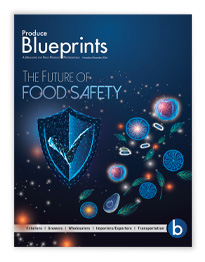
“Farmers don’t like Daylight Saving Time.”
This was a piece of accepted wisdom in my family as I was growing up. I gathered it was because cows and chickens aren’t willing to change their diurnal schedules to suit the clocks of another species.
Then there was the cattle rancher in Modoc County. (Modoc County is in the extreme northeast of California. It is one of few places where people still live lives like those of the Old West.) He was an extremely clever but eccentric man. His hobby was buying and restoring Pierce-Arrow cars, which was much more lucrative than cattle ranching.

“My father told me that the mortgage on my ranch was going to kill me,” he said, “but I just sold one of my Pierce-Arrows and paid it off.”
This rancher is relevant to our story because of his vehement objection to Daylight Saving Time, which he did not observe. His clocks were set on standard time all year round. Since Modoc County is pretty isolated, and his cowhands presumably had to live on the schedule he set for them, this was feasible.
I was a bit startled, then, to see that the beneficiaries of the Sunset Protection Law, which will institute a year-round Daylight Saving Time and was passed by the Senate last week, are expected to include farmers. At least according to a news report out of Texas.
The story quoted Steve Estes, a Texas Extension agent for Taylor County, who said, “We’re seeing more situations now where we have folks that are working a job in town and then doing agricultural practices on the side.
“We’re seeing less and less of larger scale farmers and ranchers who that is their primary income to now we’re seeing say smaller farmers and ranches especially in our area,” Estes added, not entirely coherently.
Estes no doubt has a point: agriculture and forestry account for a whopping 0.75 percent of the county’s income.
This little detail, however insignificant, highlights the difficulties of making money in agriculture. Unless you are very, very big.
Earl Butz, the blustering agriculture secretary under presidents Nixon and Ford, was famous for saying, “Get big or get out.” He cannot, in this case, be construed as lying or mistaken.
Such are the transitions in agriculture that Daylight Saving Time is no longer the foe but the friend of many farmers, reflecting the increased difficulties for small- and medium-sized growers.
I probably shouldn’t tell this joke, but I will.
Somebody asked a farmer what he would do if he had a million dollars.
He thought for a minute and said, “Reckon I’d keep farmin’ till it was all gone!”
“Farmers don’t like Daylight Saving Time.”
This was a piece of accepted wisdom in my family as I was growing up. I gathered it was because cows and chickens aren’t willing to change their diurnal schedules to suit the clocks of another species.
Then there was the cattle rancher in Modoc County. (Modoc County is in the extreme northeast of California. It is one of few places where people still live lives like those of the Old West.) He was an extremely clever but eccentric man. His hobby was buying and restoring Pierce-Arrow cars, which was much more lucrative than cattle ranching.

“My father told me that the mortgage on my ranch was going to kill me,” he said, “but I just sold one of my Pierce-Arrows and paid it off.”
This rancher is relevant to our story because of his vehement objection to Daylight Saving Time, which he did not observe. His clocks were set on standard time all year round. Since Modoc County is pretty isolated, and his cowhands presumably had to live on the schedule he set for them, this was feasible.
I was a bit startled, then, to see that the beneficiaries of the Sunset Protection Law, which will institute a year-round Daylight Saving Time and was passed by the Senate last week, are expected to include farmers. At least according to a news report out of Texas.
The story quoted Steve Estes, a Texas Extension agent for Taylor County, who said, “We’re seeing more situations now where we have folks that are working a job in town and then doing agricultural practices on the side.
“We’re seeing less and less of larger scale farmers and ranchers who that is their primary income to now we’re seeing say smaller farmers and ranches especially in our area,” Estes added, not entirely coherently.
Estes no doubt has a point: agriculture and forestry account for a whopping 0.75 percent of the county’s income.
This little detail, however insignificant, highlights the difficulties of making money in agriculture. Unless you are very, very big.
Earl Butz, the blustering agriculture secretary under presidents Nixon and Ford, was famous for saying, “Get big or get out.” He cannot, in this case, be construed as lying or mistaken.
Such are the transitions in agriculture that Daylight Saving Time is no longer the foe but the friend of many farmers, reflecting the increased difficulties for small- and medium-sized growers.
I probably shouldn’t tell this joke, but I will.
Somebody asked a farmer what he would do if he had a million dollars.
He thought for a minute and said, “Reckon I’d keep farmin’ till it was all gone!”
Richard Smoley, contributing editor for Blue Book Services, Inc., has more than 40 years of experience in magazine writing and editing, and is the former managing editor of California Farmer magazine. A graduate of Harvard and Oxford universities, he has published 12 books.




